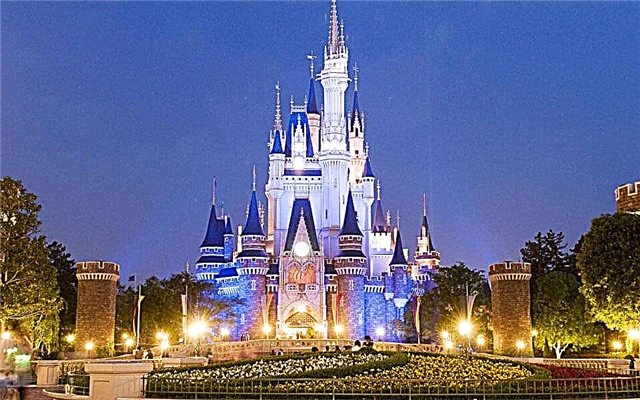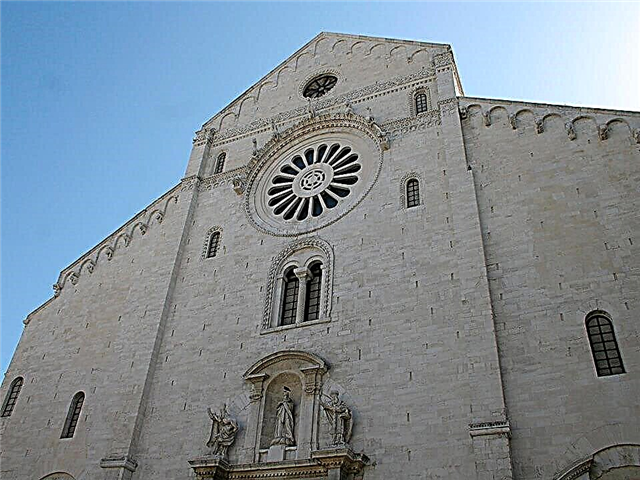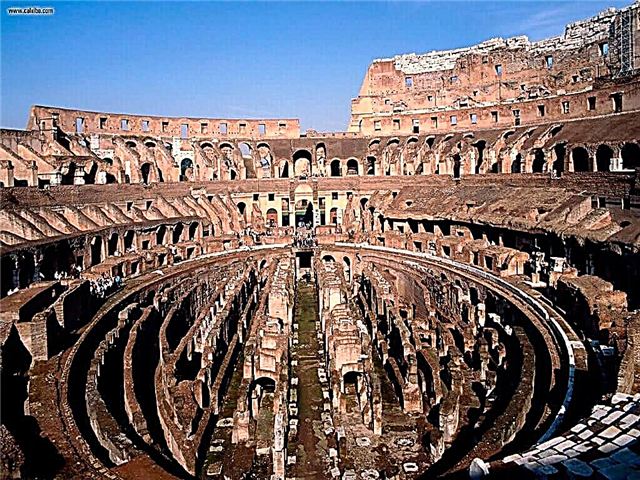The Colosseum is considered one of the main symbols of the capital of Italy. The masterpiece of architectural construction embodies the power of the imperial power, as well as the ingenious idea of the Roman engineers of ancient times. The amphitheater is a unique structure on the planet that has seen many events and tragic battles. The arena is reminiscent of the times when the Romans craved spectacle.
Construction history
In the 1st century AD, a majestic and grandiose monument of the ancient world was erected. The prehistory of the construction of the Colosseum was the difficult political situation in the Roman Empire.
In 68 AD Nero was the emperor of Ancient Rome. A brutal dictator, he imposed exorbitant taxes on his subjects. The funds were invested in the construction of a luxurious residence in the very center of the capital, which extremely embittered the impoverished population. The Senate declared Nero an enemy of the people, after which he committed suicide. The empire's provinces are ablaze with civil uprisings. Rome suffers from internal confrontation. To resolve conflicts in the state, the military, who proclaimed the ruler of Rome, the commander Flavius Vespasian, took power into their own hands.
As a man devoid of political ambition, Vespasian skillfully restores order to the empire. On his initiative, a series of economic reforms are being carried out to alleviate the situation of the people. Flavius' main political program is to provide the people with entertainment and entertainment. He plans to build a large-scale amphitheater, where fierce gladiatorial battles and animal baiting will take place. The arena should unite people in seeing bloody performances. Drawings were developed for a unique structure that can accommodate 50,000 people.
The necessary funds and manpower for the construction of the amphitheater were obtained from Jerusalem as a result of Vespasian's successful military campaign in the Judean province. For the foundation of the Colosseum, it took about 2.5 hectares of land. The construction was supposed to take place on the site of Nero's residence in the center of Rome. The former emperor's palace was destroyed, and the nearby lake was drained. The Colosseum was built for 10 years. The grand opening of the amphitheater took place in 80. In honor of the holiday, a hundred-day games were announced, during which spectators saw gladiatorial battles with wild animals brought from all over the giant empire.
Over the centuries, the Colosseum was struck by lightning, suffered from earthquakes and fell into complete desolation after the collapse of the Roman Empire. In the Middle Ages, the luxurious cladding of the arena was stripped off and used for new palaces and temples in Rome. In the 19th century, Pope Benedict XIV stopped the destruction of the Colosseum. The arena was declared a holy place, since the walls of the amphitheater were stained with the blood of thousands of Christian martyrs who died at the amusement of the Romans.
Architecture

Roman engineers were skilled architects, as evidenced by the walls of the Colosseum. It was supposed to build a bulky building with four tiers, 52 meters high. To prevent the structure from collapsing under its weight, the builders needed innovative solutions. The Colosseum is built in the shape of a giant ellipse. It is 188 meters long and 156 meters wide. The outer ring of the arena is framed by different columns in Doric, Ionic and Corinthian styles. Distinctive features are their thickness, as well as intricate decoration of the capitals.
The amphitheater consists of a whole complex of seven-meter arched arcades that form a large ring around the circumference of the building. They were the most important design element. The arched design was quite simple and effective - each stone block semicircle rests on two brick pillars. Numerous arches ensured the stability of the structure. The empty space between the pillars lightened the weight of the arena and made it airy. In total, there were 240 arched compositions faced with travertine.
The builders skillfully combined various types of stone and cement with volcanic soil. Thus, concrete was invented by the Romans. The inner elliptical walls, which served as sectors of the Colosseum, were overlaid with a concrete-brick mixture. The outer walls, faced with marble, gave the building a pomp. The facade of the upper tier of the amphitheater is not framed by arches. It is faced with solid bricks, decorated with pilasters with small window openings. The floor was built later than the first three. There were holes on its wall where special masts were installed. They served as supports for wooden rods to which a silk roof was attached. The awning protected the audience from the heat and torrential rains.
Internal organization

The gladiatorial arena, 80 × 40 meters in size, was considered a true masterpiece of the building. It was a wooden flooring covered with sand. The floor could go up and down. The lower part of the amphitheater goes 9 meters underground. There were technical equipment (a hand lift), plumbing, and cages with slaves and wild animals. The spectators' seats in the Colosseum spoke about the social position of the Romans in society. The amphitheater clearly demonstrated the hierarchy of citizens. Common people (plebeians) sat on the upper tiers. Sectors closer to the arena were intended for senators, entrepreneurs and aristocrats. The grandstand seats were carved in marble.

One of the most striking features of the Colosseum is its intricate internal organization. The amphitheater is divided by circular and transverse aisles. Every Roman had a ticket in his hand. Numbered arched entrances (there were 80 in total) led visitors to specific sectors and tiers. The large gates were intended for entry into the Colosseum for noble persons. Ordinary citizens had to enter the bowl of the arena through small passages that led into narrow corridors, and then climb the numerous steep steps up.
Colosseum today

Today the Colosseum is the most visited tourist attraction. The facade and tiers of the amphitheater are significantly dilapidated. Several sectors, which can accommodate 1,500 people, remain in good condition. Famous musicians sometimes perform within the walls of the Colosseum. In particular, Paul McCartney, Elton John and Billy Joel delighted their fans. In order to get to the Colosseum, tourists need to stand in a large queue. Turnstiles and metal detectors are installed in front of the entrance to the arena. Tourists can climb to the upper tier along the same steps and corridors along which the ancient Romans passed. The only innovation is the installed modern elevator.
Opening hours and ticket prices
The opening hours of the amphitheater depend on the season. The majestic gates of the Colosseum open from 9:00 am to 6:00 pm (April - September) and until 4:00 pm (October - March). The ticket price is 12 euros.
Where is and how to get to the Colosseum
The Colosseum is located in the historic district of Rome on the Piazza del Colosseum. Nearby is the Arch of Constantine and the Roman Forum. You can get to the arena by metro (Colosseo station), as well as by buses and trams.











